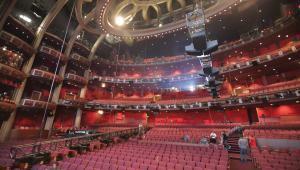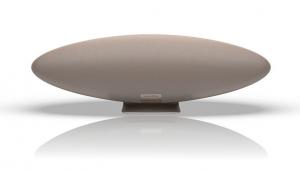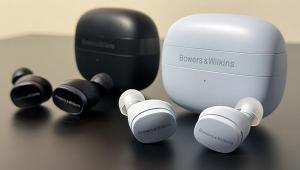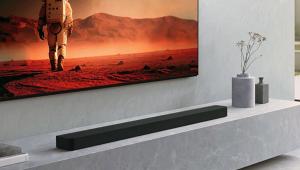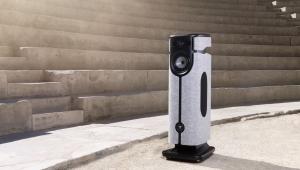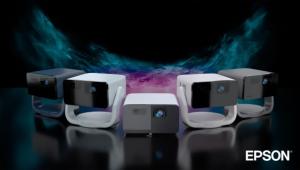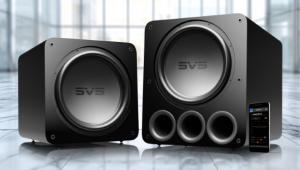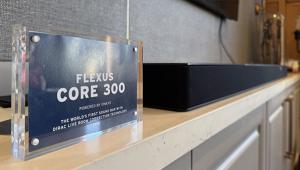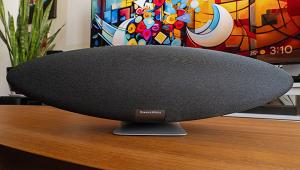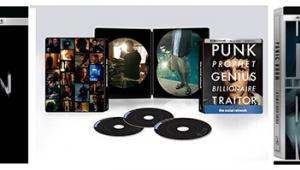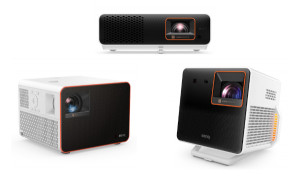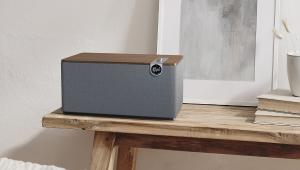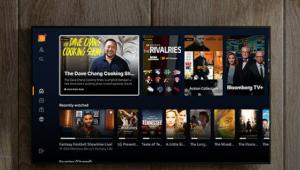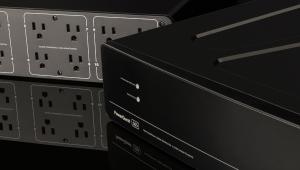Five for Five Page 5
Whole-house A/V It's never been easier to have music and movies in every room  The last five years have seen the emergence of a plethora of products designed to entertain the whole family throughout the entire house. But it's only within the last couple of years that multiroom audio/video has moved toward the mainstream.
The last five years have seen the emergence of a plethora of products designed to entertain the whole family throughout the entire house. But it's only within the last couple of years that multiroom audio/video has moved toward the mainstream.
Multiroom audio has come a long way from the days of propping up a speaker on the window ledge so you could hear music in the back yard. In-wall and in-ceiling speakers have become staples for whole-house audio systems. We tested a Niles in-wall in our premiere issue, and since then we've reviewed many others as well as multiroom processors and amplifiers. 
But even early on there were indications of the radically new directions whole-house systems would soon take. In that April issue, I evaluated Terk's Leapfrog HomeNetwork system, which moved audio and video around the house over existing phone lines. And that November, we looked at Escient's TuneBase 100 CD management system, which let you download CD title and track information as well as album covers for display on a TV - something that would soon become expected of any credible multiroom rig.
Our January 2000 issue promised the "The Home of Tomorrow . . . Is Here" and delivered on that by describing the products and services that would soon emerge to transform the home into an integrated entertainment system. And in July/August, Dan Kumin took a look at Bose's Lifestyle 50 system. This four-zone setup, with an innovative radio-frequency (RF) touchscreen controller at its heart, showed that a multiroom audio system doesn't have to be complex or professionally installed to be effective.
And then came the digital audio servers. Early models like the AudioRequest ARQ1 from ReQuest Multimedia (also July/August 2000) and the Compaq iPAQ (December 2001) introduced people to standalone components that stored massive amounts of music as compressed files on a hard-disk drive. Next-generation servers like the Hewlett-Packard, Imerge, SonicBlue, and ZapMedia components that Dan Kumin reviewed for "May We Serve You?" (May 2002) had bigger hard drives, made it easier to interact with the Internet, and took advantage of their Ethernet ports. But a new benchmark was set by the Escient FireBall (November 2002), which allowed you to link several FireBalls to create a sophisticated multiroom, multizone system.
Components that use the Ethernet computer-networking communications protocol will probably bring the biggest change in how we shuttle entertainment around the house. Consider Onkyo's NC-500 Net-Tune receiver (reviewed in February/March 2003), which can link up to a home network and stream audio from a computer's hard drive or access Internet radio. Or, better yet, break free of room-to-room cabling and go with a wireless (Wi-Fi) setup, like Yamaha's MusicCAST system (September 2003), the first system designed specifically to send digital audio over a Wi-Fi network. But then came OmniFi's Digital Media Streamer (November 2003), which uses Wi-Fi to send audio not only around your house but to your car as well.
With personal computers increasingly becoming sources of entertainment, Ethernet connections are popping up on more and more "ordinary" A/V components. Consider the Go-Video D2730 (September 2003) DVD player, which is one of the first players that can be integrated into an Ethernet network so you can stream content from your PC to your living room.
Many new homes come with "structured" wiring that includes Category-5 cabling, while older homes are being "retrofitted" with Cat-5 so the owners can take advantage of new entertainment technologies. With the aid of a receiver like Harman Kardon's AVR 7200 (June 2003), this wiring can be used to distribute line-level audio signals to in-wall keypad amplifiers, creating an audio-distribution system.
But how does the prospect of a home network sit with all those people who feel lucky if they can get their clock radio alarms to work? That's why custom installation has grown dramatically over the past five years. To bring readers up to speed on what installers have to offer, in 2001 we ran a series of articles called "Custom Installation Basics" that covered all aspects of working with a pro. And in the July/August 2003 issue, we inaugurated "The Custom Installer," John Sciacca's regular look at networking, multiroom audio and video, and other installation-related issues.
It bodes well that manufacturers aren't just looking to make their products more custom-installer friendly - by including multiroom/multisource outputs on "normal" A/V receivers, for example - but are also looking to make such features easier for everyday people to use. We appear to be heading toward a world of products that will integrate seamlessly and automatically with each other once they're plugged in and connected to the home's entertainment network.
- Log in or register to post comments




